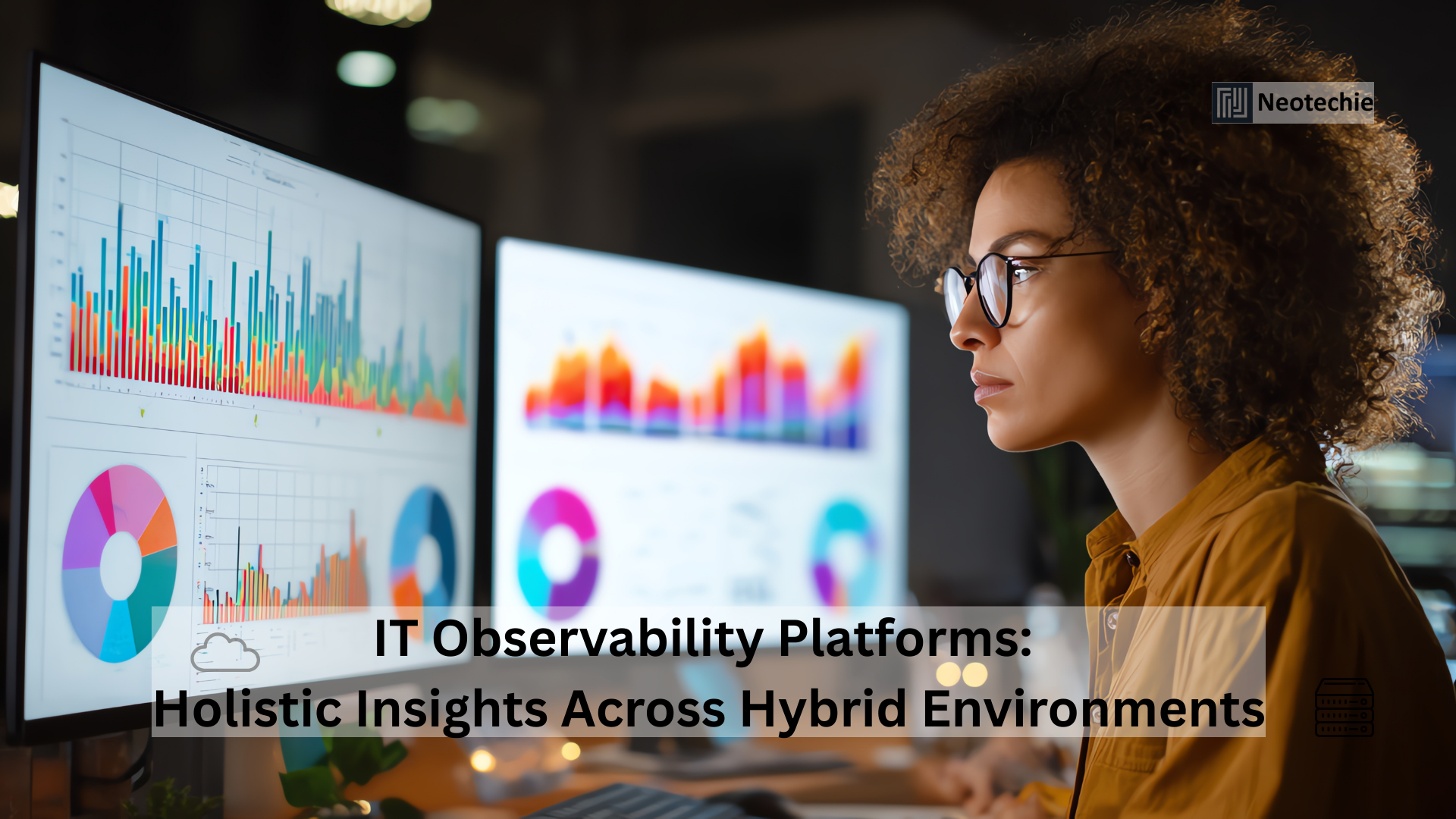IT Observability Platforms — Gaining Holistic Insight Across Hybrid Environments
Unlocking Complete Visibility in Complex IT Landscapes
Modern enterprises operate across hybrid IT environments, combining on-premises systems, cloud services, and edge devices. This complexity makes monitoring and managing system health a challenge. IT observability platforms provide comprehensive insight into infrastructure, applications, and user interactions, enabling organizations to proactively detect issues, optimize performance, and make informed decisions.
Adopting observability as a strategic approach transforms IT from reactive troubleshooting to proactive management, directly contributing to business transformation and operational resilience.
What IT Observability Platforms Bring to Enterprises
- End-to-End Visibility Across Systems
- What: Observability platforms collect metrics, logs, and traces from all components of hybrid IT environments, ensuring no part of the system is hidden.
- Why: Fragmented monitoring leaves blind spots, making it difficult to detect and resolve issues before they escalate, potentially affecting customers and operational continuity.
- How: Unified dashboards consolidate data from servers, cloud services, applications, and IoT devices, presenting it in actionable formats. For example, an enterprise SaaS provider can simultaneously track API response times, server load, and user interactions, ensuring seamless service delivery and avoiding downtime.
- Proactive Issue Detection and Alerting
- What: Advanced analytics and AI detect anomalies in system behavior and predict potential failures before they impact operations.
- Why: Waiting for users to report issues or manually discovering them leads to lost revenue, productivity, and customer trust.
- How: Machine learning algorithms analyze historical and real-time data, identifying patterns that deviate from normal behavior. Alerts can trigger automated workflows to address the problem or notify responsible teams. For instance, unusual database latency triggers a preemptive response, preventing outages and maintaining service reliability.
- Root Cause Analysis and Faster Resolution
- What: Observability platforms correlate data across systems to identify the source of problems rapidly, providing clarity amid complex infrastructures.
- Why: Without context, troubleshooting is time-consuming and costly, delaying critical fixes and impacting business continuity.
- How: Trace analytics and dependency mapping highlight the origin of problems and affected components. For example, if a web application experiences performance degradation, the platform can determine whether the issue is caused by backend services, network latency, or database queries, accelerating incident resolution and minimizing impact.
- Performance Optimization and Capacity Planning
- What: Continuous monitoring offers actionable insights to enhance system performance and plan for future growth efficiently.
- Why: Inefficient resource utilization can lead to poor performance, higher costs, and potential service interruptions.
- How: Observability tools analyze trends, usage patterns, and peak load times, recommending infrastructure adjustments such as scaling, load balancing, or resource reallocation. For example, a cloud application can dynamically adjust compute capacity based on user demand trends, enhancing performance, reducing costs, and preparing for peak loads.
- Enhanced Collaboration Across IT Teams
- What: Shared visibility into system performance and incidents encourages collaboration between development, operations, and security teams.
- Why: Silos among teams delay problem resolution, hinder strategic initiatives, and create inefficiencies.
- How: Centralized dashboards, real-time alerts, and collaborative workflows allow multiple teams to view and act on the same insights. For instance, DevOps and security teams can jointly respond to performance anomalies while maintaining compliance, improving operational efficiency, reducing downtime, and strengthening cross-team productivity.
Why IT Observability Platforms Matter for Businesses
- Operational Agility: Quickly detect and respond to issues across hybrid IT environments.
- Reliability and Uptime: Maintain consistent performance and availability of critical applications.
- Data-Driven Decisions: Analytics from observability platforms guide IT strategy and resource allocation.
- Cost Optimization: Identify inefficiencies and optimize infrastructure usage.
- Enhanced Customer Experience: Proactive management ensures users experience reliable, high-performing services.
Driving Business Transformation Through IT Observability
- Proactive IT Operations: Move from reactive incident handling to predictive management.
- Accelerated Digital Transformation: Observability enables safe adoption of cloud and hybrid strategies.
- Strategic Resource Planning: Data-driven insights inform infrastructure investments and scaling decisions.
- Cross-Team Collaboration: Shared insights break down silos and enhance IT productivity.
- Enhanced Competitive Advantage: Reliable, high-performing systems strengthen brand reputation and user trust.
How Neotechie Can Help
At Neotechie, we enable organizations to implement IT observability platforms effectively:
- Deploy holistic monitoring solutions covering on-premises, cloud, and edge environments.
- Integrate AI-driven anomaly detection to anticipate and prevent issues.
- Provide root cause analysis tools and automated workflows for faster problem resolution.
- Deliver actionable insights for performance optimization and capacity planning.
- Offer consulting, implementation, and support to align observability practices with business goals.
IT observability platforms transform complex hybrid environments into transparent, manageable, and optimized systems. Neotechie helps enterprises harness observability to drive operational resilience, efficiency, and strategic growth. ✨💡🌟

